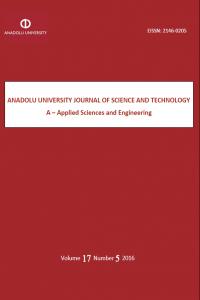Bioremediation of arsenic (As) from mine effluent by a horizontal flow constructed wetland: A case study in largest borax reserve area in over the world, Kırka, Eskişehir
Öz
In this study, a horizontal flow constructed wetland (HFCW) planted with Typha angustifolia, was tested to bioremediation potential for arsenic from mine effluent under the natural climatic conditions in largest boron mine reserve area over the world, Kırka (Eskişehir). Briefly, the objective of the present experiment was to investigate arsenic bioremediation capability of wetland system and asses the phytoremediation efficiency of T. angustifolia, selected as a donor plant in this study, with different initial arsenic concentrations. Our results indicated that HFCW has capability to decreased arsenic in mine effluent from 49 µg L-1 to 21.8 µg L-1 in a period of 84 days, suggesting that HFCW could be a reasonable bio-filter option to control arsenic pollution directly from mining effluent in largest borax reserve over the world. Furthermore, we found that arsenic concentration in outflow samples was stably below 10 µg L-1 (drinking water safety limit) with an inflow range from 42.3 to 42.1 arsenic µg L-1 during the first 28 days. Our results also indicated that belowground parts of T.angustifolia accumulate more arsenic from mine effluent compared to aboveground parts during experiment period. Therefore, we suggested that belowground parts of the plants in HFCW play an important role for arsenic bioremediation from mine effluent which origin of Kırka Borax reserve area. In this respect, bioconcentration factor (BCF) for the plants which grown in HFCW was found higher than those of control group. Moreover, results of the present experiment also showed that relatively high level of arsenic retained in the filtration media of HFCW during the experiment period, indicating that filtration media which was used in HFCW has potential to filter arsenic from mine effluent. Consequently, the scientific insight of the present study is to present an innovative, cost effective, and easy operating method for arsenic remediation from mine effluent.
Anahtar Kelimeler
Arsenic removal Constructed wetlands Bioremediation Mine effluent Typha angustifolia
Ayrıntılar
| Birincil Dil | İngilizce |
|---|---|
| Konular | Mühendislik |
| Bölüm | Araştırma Makalesi |
| Yazarlar | |
| Yayımlanma Tarihi | 20 Aralık 2016 |
| Yayımlandığı Sayı | Yıl 2016 Cilt: 17 Sayı: 5 |


